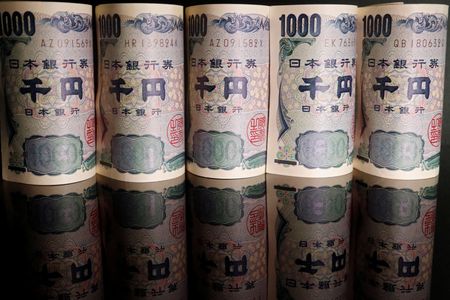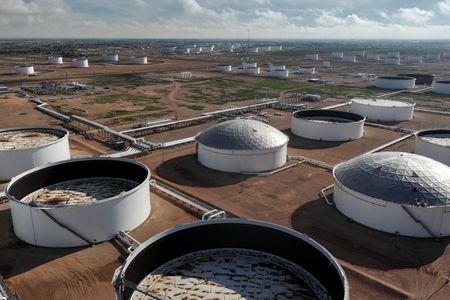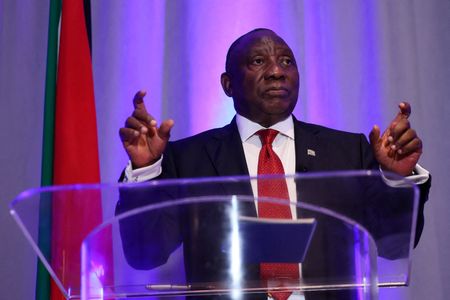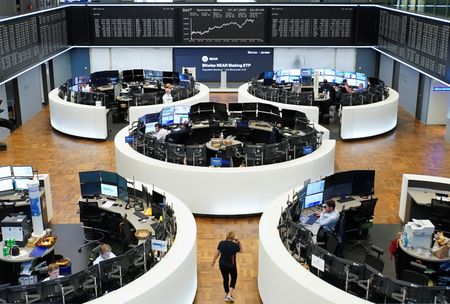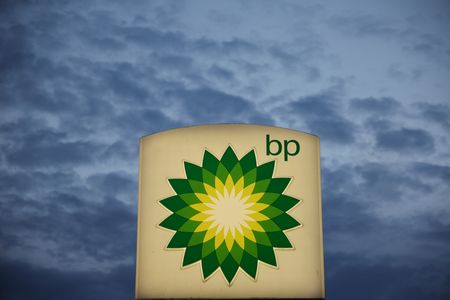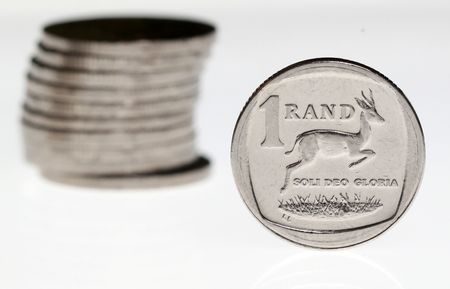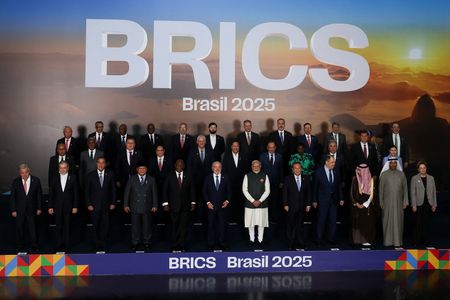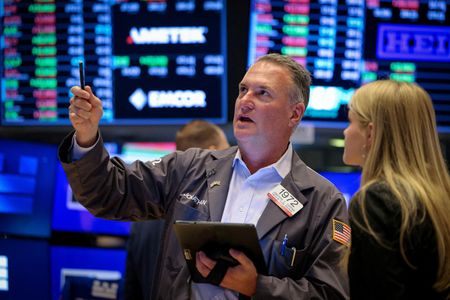By Rae Wee and Amanda Cooper
SINGAPORE/LONDON (Reuters) -The yen took a hit on Tuesday from U.S. President Donald Trump reiterating his plan to impose 25% tariffs on goods from Japan and South Korea in the latest twist of his chaotic trade war.
The Australian dollar charged higher after the country’s central bank defied market expectations and left its cash rate steady at 3.85%.
Trump on Monday began telling trade partners – from powerhouse suppliers like Japan and South Korea to minor players – that sharply higher U.S. tariffs will start August 1, but he later said that he was open to extensions if countries made proposals.
The yen weakened as U.S. trading got underway, leaving the dollar up 0.3% on the day 146.56.
Prime Minister Shigeru Ishiba said on Tuesday he would continue negotiations with the U.S. to seek a mutually beneficial trade deal.
“There is still a lot of uncertainty as to where tariff rates will eventually settle and which countries will get what rates, so uncertainty about the global economy is still high and that will keep investors on edge for the time being,” said Carol Kong, a currency strategist at Commonwealth Bank of Australia.
“This is just the start and we’ll get more headlines out for sure over the coming days.”
The European Union will not receive a tariff letter and could secure exemptions from the U.S. baseline rate of 10%, EU sources familiar with the matter told Reuters on Monday.
Reflecting the contrasting fortunes of the two trading partners, the euro hit a one-year high against the yen and was last up 0.6% on the day at 171.95.
The euro rose against the dollar as well, up 0.2% to $1.1731.
“The view of the market is that it’s an extension, including in some cases more talks. So that’s positive,” Frederik Ducrozet, head of macroeconomic research at Pictet Wealth Management, said.
“More of the same, less bad than feared with the door still open to negotiation, I can understand why the market is taking it in a relatively benign way,” he said.
The South Korean won also fared better than its Japanese counterpart, rising 0.4% to 1,369.86 per dollar, recovering from Monday’s 1% fall.
South Korea said it planned to intensify trade talks with the United States.
RBA STUNS MARKETS
The standout performer among the major currencies on Tuesday was the Aussie dollar, which rose more than 1% in response to the RBA’s surprise decision to leave rates unchanged. It was last up 0.8% at $0.6545.
Markets had positioned for a cut, yet the central bank said the board “judged that it could wait for a little more information” to confirm that inflation was slowing.
Still, the board did note that the risks to inflation were more balanced and appeared to be waiting for a reading on second quarter prices due at the end of July before deciding.
“The uncertainty around Trump’s tariffs means that it doesn’t embolden a decisive decision, whereas the need for more assurance over inflation means they probably want to wait out this meeting and get into August,” said Vishnu Varathan, head of macro research for Asia ex-Japan at Mizuho.
Markets shifted to imply around an 85% chance the RBA would indeed cut to 3.60% at its August 12 meeting, and now favours rates bottoming at 3.10% rather than 2.85%.
The New Zealand dollar was last up 0.3% at $0.602, while sterling fell 0.2% to $1.358.
(Additional reporting by Yoruk Bahceli in London and Rae Wee in Singapore; Editing by Kim Coghill, Sam Holmes, Christian Schmollinger and Chizu Nomiyama )

